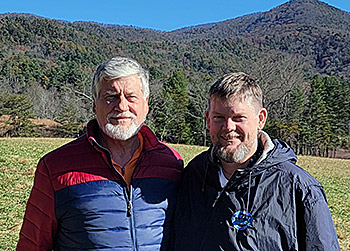By Dr. Mike Foust, as told to Kenneth Kesner
Air and missile defense (AMD) isn’t just a mission for me; it’s a way of life.
For as long as I can remember, I’ve been immersed in the U.S. Army AMD community. My father, Dr. George Foust, spent a decade in uniform, commanding Air Defense Regiment batteries and working on Nike, Hawk and Patriot missile systems. When he eventually left the service, Dad worked as a defense contractor and continued developing the Army’s AMD capability. His writing led to development of the Army’s original Integrated Air and Missile Defense (IAMD) capabilities description document and, ultimately, to the IAMD Battle Command System, or IBCS, for which Northrop Grumman was chosen prime contractor in 2009.
I grew up hearing about his career. Occasionally, I was able to watch Patriot live-fire tests at White Sands Missile Range in New Mexico, observing as he worked. Even at only 14 years old, I was struck by the mutual respect among my father and his colleagues in and out of uniform. In the mid-1980s, when I was about 15, Dad was earning a doctorate in engineering and wrote his dissertation on communications, command and control (C3) in air defense. It described an open-architecture AMD system that would enable any sensor or radar to share data and work with any effector or weapon system, regardless of maker.
I’m proud of my AMD heritage and excited to be part of the team using that experience to help build the future systems that will ultimately connect all our services as one joint force. Defense runs in my family, and I’m glad to carry on our tradition of pioneering.
Dr. Mike Foust, Chief Architect for IBCS
It wasn’t until my freshman year in college that I realized I might want to follow in his footsteps. It was 1991, and the world watched as Operation Desert Storm and the Persian Gulf War were covered live on the first 24-hour TV news networks. I saw my father’s efforts in action as Patriot missiles intercepted and destroyed enemy Scud missiles aimed at our troops and allies. His career was making a difference in people’s lives, protecting them, and I realized then that was something I wanted to be part of.
In 1998, as I was completing my doctorate in mathematics from Auburn University and considering options, I realized there’d only been one career that ever really made sense for me: AMD.

I joined Northrop Grumman in April 2020 as chief architect for IBCS after decades of my own career in AMD, sometimes as a contractor, sometimes as a government employee. In 2021, I was promoted to NG Fellow. The opportunity to bring my father’s dissertation and its concepts to reality is a crowning achievement and having him still around to be able to share this experience brings me great joy. I’ve had the rare privilege of collaborating with and learning from him my entire life, as his son and as a colleague. He retired in 2014, but in Army AMD circles he’s still commonly referred to as “the Godfather of IBCS.”
I’m currently spending most of my time back at White Sands, where IBCS is undergoing its grueling initial operational test and evaluation phase — the final hurdle before a decision is made on the system’s manufacturing and deployment to warfighters. It’s tremendously gratifying to watch soldiers learn IBCS and see what they can do with it.
I’m proud of my AMD heritage and excited to be part of the team using that experience to help build the future systems that will ultimately connect all our services as one joint force. Defense runs in my family, and I’m glad to carry on our tradition of pioneering.
Return to the Life at Northrop Grumman home page.